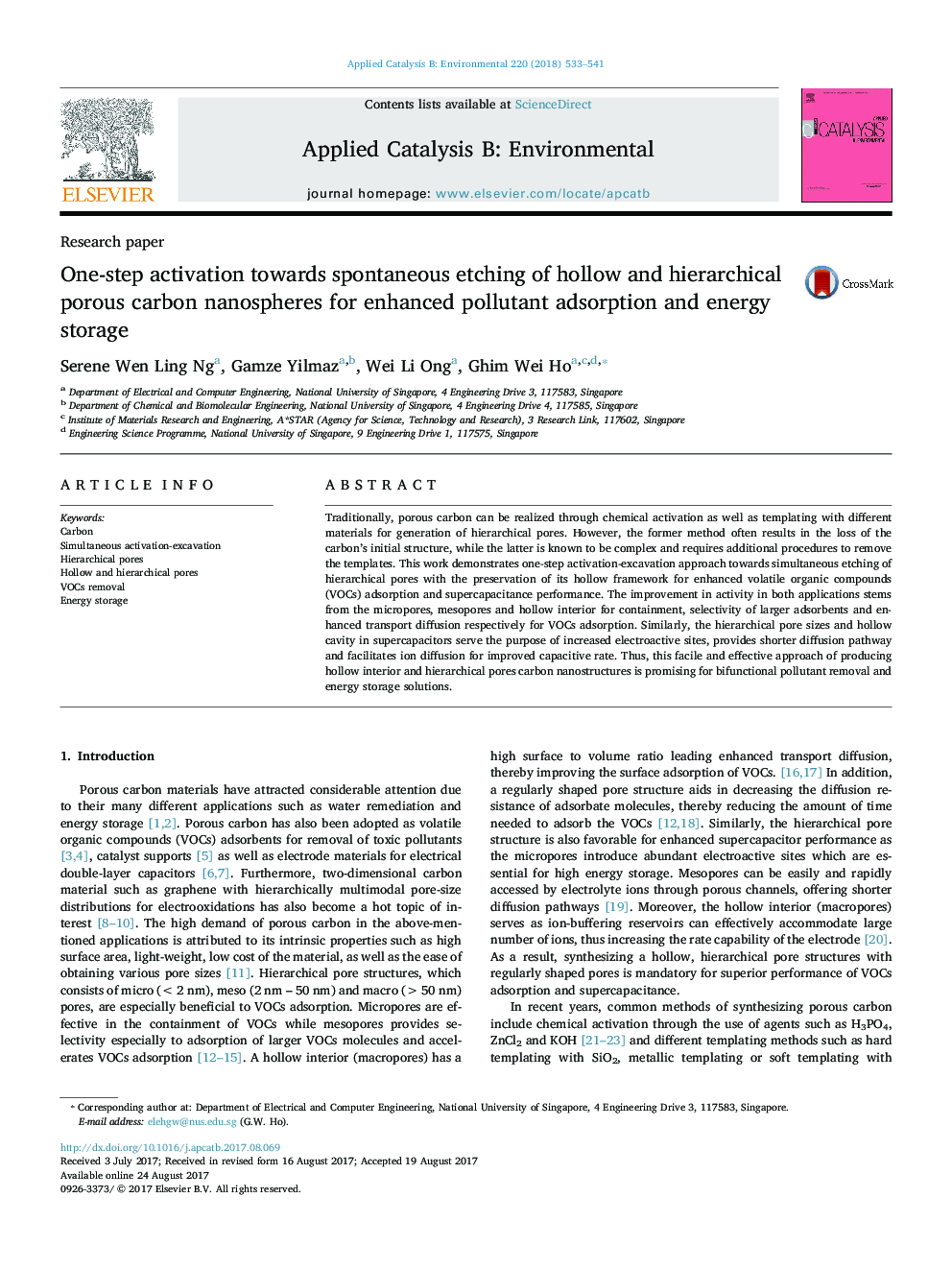| Article ID | Journal | Published Year | Pages | File Type |
|---|---|---|---|---|
| 6453656 | Applied Catalysis B: Environmental | 2018 | 9 Pages |
â¢Hollow and hierarchical pore sizes carbon nanospheres fabricated using a one-step KOH activation-excavation approach.â¢Role of hierarchical pore sizes for containment, selectivity of larger adsorbents and enhanced transport diffusion.â¢Enhanced energy storage performance also due to the unique structure for increased electroactive sites, shorter diffusion pathway and facilitates ion diffusion.â¢TiO2 sheets grown on carbon structure further aid in VOCs degradation.
Traditionally, porous carbon can be realized through chemical activation as well as templating with different materials for generation of hierarchical pores. However, the former method often results in the loss of the carbon's initial structure, while the latter is known to be complex and requires additional procedures to remove the templates. This work demonstrates one-step activation-excavation approach towards simultaneous etching of hierarchical pores with the preservation of its hollow framework for enhanced volatile organic compounds (VOCs) adsorption and supercapacitance performance. The improvement in activity in both applications stems from the micropores, mesopores and hollow interior for containment, selectivity of larger adsorbents and enhanced transport diffusion respectively for VOCs adsorption. Similarly, the hierarchical pore sizes and hollow cavity in supercapacitors serve the purpose of increased electroactive sites, provides shorter diffusion pathway and facilitates ion diffusion for improved capacitive rate. Thus, this facile and effective approach of producing hollow interior and hierarchical pores carbon nanostructures is promising for bifunctional pollutant removal and energy storage solutions.
Graphical abstractDownload high-res image (204KB)Download full-size image
